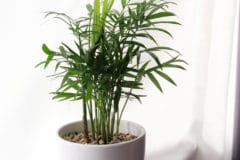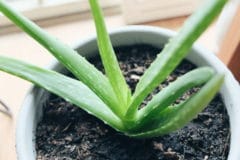All About Areca Palms
The areca palm is a Madagascar native, which should give you a hint about its environmental requirements. The palms prefer humid, tropical sites with plenty of bright light and some direct sun. Even outdoors they generally only live about 10 years; when grown indoors their lifespan is considerably shorter. They are also known as golden cane palm, butterfly palm and yellow palm.
It’s About the Light
Unlike some houseplants that can tolerate low light levels, areca palms must have lots of bright indirect light. They can also handle full sun as long as it is not in the middle of the day. In a sun room or greenhouse, they should get enough light to do well. Just putting them near a window may not be enough; you may need to supplement with grow lights.
And the Fertilizer
The second big problem when growing areca palms indoors is that they are very sensitive to fertilizer salts. While they generally don’t need to be repotted because they have grown too large, it may be wise to repot in order to minimize exposure to the salts that inevitably form when you fertilize a plant in a container. You can also leach the soil with additional water, but that’s a temporary fix.
The Right Water
Areca palms need water, but watering can also create some problems, such as:
- Waterlogged soils; let the soil dry out between waterings.
- Fertilizer salt buildup; use dilute water-soluble fertilizer only.
- Tap water with fluoride or chlorine; use rainwater, distilled water or filtered water.
- If you must use tap water, let it sit on the counter overnight in a wide-mouth container to dissipate the chlorine and fluoride.
Fertilizing Areca Palms
The areca palm is a heavy feeder. When grown in containers, however, too much food makes it grow too fast and increases salts in the soil. You can try using a timed-release fertilizer pellet in the spring. A micronutrient spray applied to the fronds is one way to feed your areca without increasing salts in the soil. Don’t fertilize in winter.
Propagating Areca Palms
If you do manage to grow this plant, it will develop clumps by shooting up new stems around the original plant. The plant can be divided to give you more palms. Gently loosen the soil and find the roots for a sucker. Cut them with a sharp, clean knife. Replant the sucker in a new pot and water in well.












